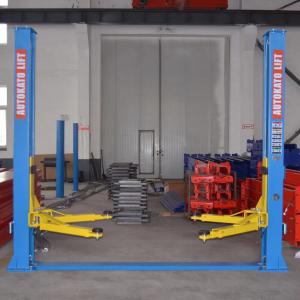Wheel Alignment Equipment
Wheel alignment equipment is a type of automotive equipment used to measure and adjust the various angles of the wheels and suspension components of a vehicle. This equipment is critical for ensuring proper alignment of a vehicle's wheels, which helps to prevent premature tire wear and improve vehicle handling and performance. There are several types of wheel alignment equipment available, including 2-wheel alignment, 4-wheel alignment, and computerized or laser alignment systems. Overall, wheel alignment equipment is an essential tool for maintaining and repairing vehicles, and its use helps to ensure that vehicles are operating safely and efficiently on the road.
Here are six things to consider when choosing the right alignment equipment for your shop.
Your shop’s space limitations:One of the main reasons shops outsource wheel alignments is because they don’t have space to accommodate the large front-of-the-bay camera towers that are part of most alignment systems. In these situations, consider mobile alignment systems that don’t require these bulky towers, giving you back 5 to 8 feet of space at the front of the bay.
Time-wasting processes:With some systems, technicians must perform the time-consuming and physically demanding process of rolling compensation in order to get an accurate alignment. This requires physically rolling the vehicle backward to allow the alignment head spindle to turn approximately 45 degrees and then rolling it forward. But there’s an easier, faster and safer way. Alignment equipment that uses advanced technology to eliminate the need for runout compensation will produce faster, accurate readings, increase productivity, and create a safer working environment.
Signal reliability:Losing the signal on your cell phone is annoying. Losing the signal between the targets on a vehicle and the camera tower is costly because you can get inaccurate measurements or need to repeat the alignment process. Choosing a system that doesn’t need a tower eliminates the interference risk to ensure an accurate measurement the first time.
How tall your techs are: Some alignment systems have height limits and can only be used when lifts are set at certain heights — which may not be the most ergonomic and productive heights for all the technicians in your shop. Choose equipment that anyone in your shop (now and in the future) can use comfortably.
Your budget:Thanks to new players in the market, it’s no longer necessary to pay a premium price for a premium alignment system. Shop around to find the best deal on equipment that meets your specific needs.
What kind of lift you want to use: Some wheel alignment equipment can only be used with certain types of lifts, limiting your options. Look instead for a company that can provide a full range of lifts that are compatible with its alignment instrumentation, so you can get the best package available to maximize efficiency and profitability for your shop.
Additional options and information
So, we decided to add to your options, give you more to ponder and additional considerations.





